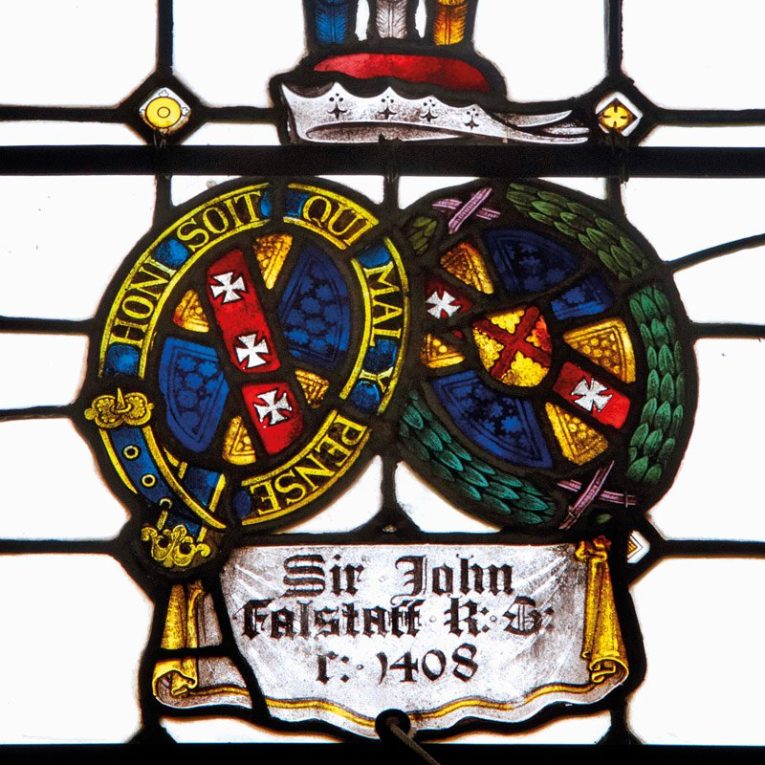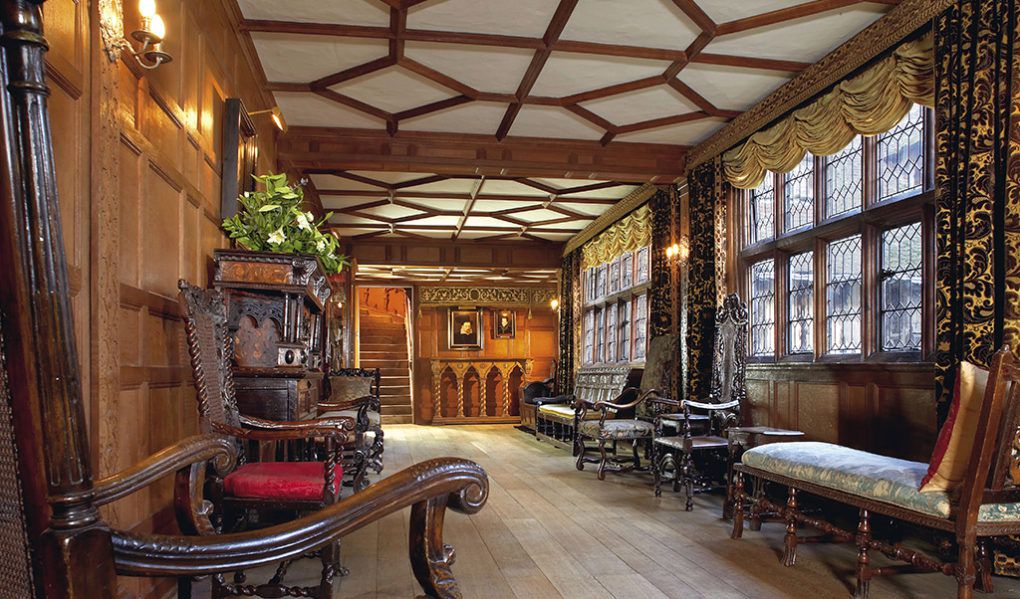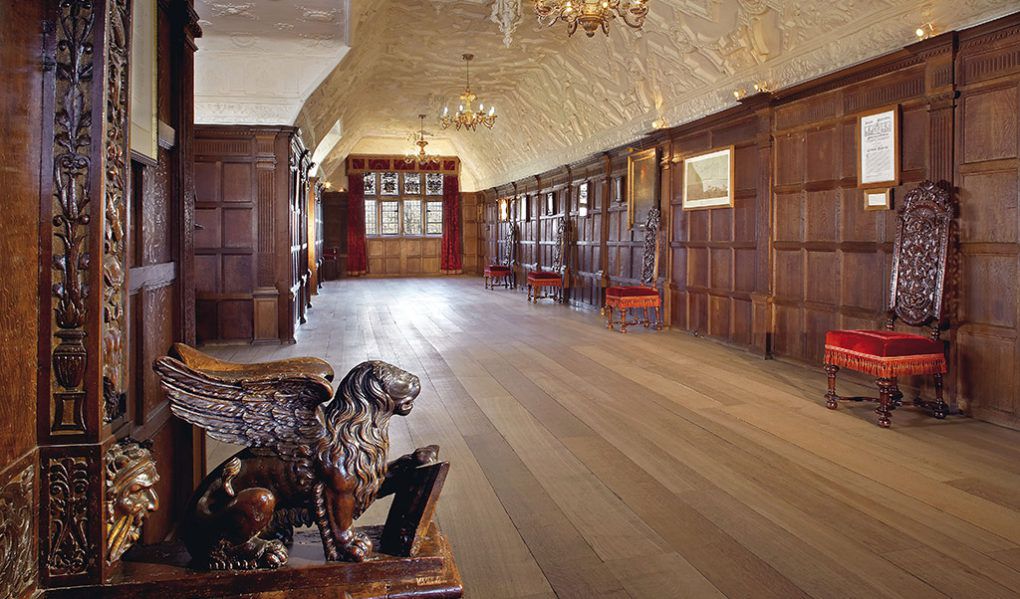

The theme for this week’s #Feature Fridays with Historic Houses is Shakespeare.
By the time William Shakespeare died at the age of 52 in 1616, he had written at least 37 plays and over 150 sonnets and poems, that we know of.
Today, Shakespeare’s plays continue to be popular both in schools and on stage, having been translated into every major language, and performed more frequently than any other playwright in history.
Shakespeare’s works have also been credited with either inventing or introducing some 3000 plus words and expressions into the English language, including ‘fashionable’, ‘lacklustre,’ ‘in a pickle,’ ‘the green eyed monster,’ and ‘in one fell swoop.’
While we do not believe that Shakespeare ever visited Hever Castle, as a playwright writing about the world in which he lived, we can see through some of the items in our collection how events that were happening in the Tudor world at large, helped shape and influence many of his works.
The bust on the windowsill in the Library at Hever Castle has long been believed to depict Christopher Columbus, the 15th century Italian explorer who is often credited with first discovering America (even though it is now more widely believed that Icelandic sailor Leif Erikson was the first man to discover the continent, which he did some 500 years earlier in around 1000 AD).
By the time that Shakespeare was writing in the late 16th and early 17th centuries, these still relatively ‘new’ lands were in the early stages of being populated, with Jamestown (named for King James I of England and Scotland) being one of the earliest settlements. But disaster was to strike the fledgling colony in 1609, when a ship named Sea Venture which was carrying more settlers and vital supplies from England, was forced onto rocks in Bermuda by a storm. After nine months, the stranded survivors managed to build a new ship and word of their plight began to reach England.
Tellingly, one year after this in 1610, Shakespeare wrote his play ‘The Tempest,’ which tells of a ship, run aground on an island by a storm, or ‘tempest’. Given the timing, it is therefore not hard to believe that Shakespeare had taken inspiration from a popular news story of the day. Much as modern writers continue to do now.
Another source of inspiration for Shakespeare was the attitudes of his patrons, particularly Queen Elizabeth I, and her successor, King James I.
Here at Hever Castle we have portraits of both of these figures in the Staircase Gallery on the first floor of the castle, and while Elizabeth was undoubtedly the reason for the positive Tudor leanings of Shakespeare’s history play ‘Richard III,’ (in which Elizabeth’s paternal grandfather Henry kills the title character and takes the throne as King Henry VII, the first Tudor monarch of England) it was James I who inspired what is arguably one of Shakespeare’s most famous works; Macbeth.
As well as being set entirely in Scotland and populated by Scottish characters, in a nod to James’ own Scottish heritage, the play also focuses on witchcraft and assassination attempts, both of which were great fears of James’.
During the reign of James I, 70-200 so called ‘witches’ were rounded up and killed from the area of Berwick Upon Tweed alone, such was his determination to stamp out supposed malevolent forces. This possibly explains why Macbeth features three evil witches who watch and meddle in royal affairs. Just as James believed they were trying to do in life.
Similarly, the plot also features good King Duncan being murdered by Macbeth, who is tormented by memories of the evil deeds he has committed until he is eventually killed in battle himself.
For a king who was as afraid of assassination attempts as James was, Macbeth would have been a fitting tale of a character who murdered his monarch and only succeeded in hastening his own end along with it. This is also particularly notable when you consider the fact that Macbeth was written in 1606, just one year after the failed 1605 gunpowder plot, which aimed to blow up both King James and parliament. Here then, we have another example of Shakespeare looking to the world he lived in to spark his creativity.
Another link to Shakespeare is in the wealth of Italian artefacts we have here at Hever Castle, most of which were collected by William Waldorf Astor, who owned the castle from 1903. While many of Shakespeare’s plays were set in Italy, only one was set in Venice.

Othello tells the story of a Moorish soldier, who is slowly convinced by his servant Iago, that his Venetian wife Desdemona is being unfaithful. Desdemona’s father is a Doge, or senator, of Venice, and upstairs in the Long Gallery at Hever Castle we have an actual 16th century Doge’s Throne on display, the sheer size of which helps to convey the importance these men would have carried in their time. In a glass case, visitors are also able to see the detail of the intricate design of a 17th century Doge’s hat that is on display.
Another owner of Hever Castle was Sir John Fastolf who was a soldier during the Hundred Years War. A stained glass window bearing his coats of arms is visible in the Long Gallery of Hever Castle. Fastolf has enjoyed a lasting reputation as ‘Falstaff’ in Shakespeare’s Henry IV Parts I and II and The Merry Wives of Windsor and a new inventive performance of Shakespeare’s raucous comedy is scheduled for the open air theatre at Hever Castle this August.

So therefore while we may not have a strong connection to Shakespeare himself here at Hever Castle, we have constant reminders and connections to the world he lived in, the stories he would have heard, and the influences that ultimately shaped his works.
If you enjoyed this item on walks then why not discover the previous #Feature Fridays news items.
Book your visit to Hever Castle & Gardens.
Within the grounds of the Hever Castle Estate, there are two opportunities for you to stay the night with us.
Hever Castle has played host to many important events and celebrations for over 600 years. In 1903 when William Waldorf Astor set about restoring Hever Castle to its former glory, he added the Astor Wing, to accommodate his family and guests, before creating a lake and the spectacular Italian Garden to house his impressive collection of ancient Greek and Roman statuary.
There are multiple places to eat & drink across the Hever Castle Estate. Select between the Castle & Gardens and Golf Club below to discover more.
Set in the mature grounds of the Hever Castle Estate, Hever Castle Golf Club is a 27 hole Kent golf course that will encourage and inspire all golf enthusiasts.
Set in the mature grounds of the Hever Castle Estate, the Wellbeing Centre consists of five smart treatment rooms.